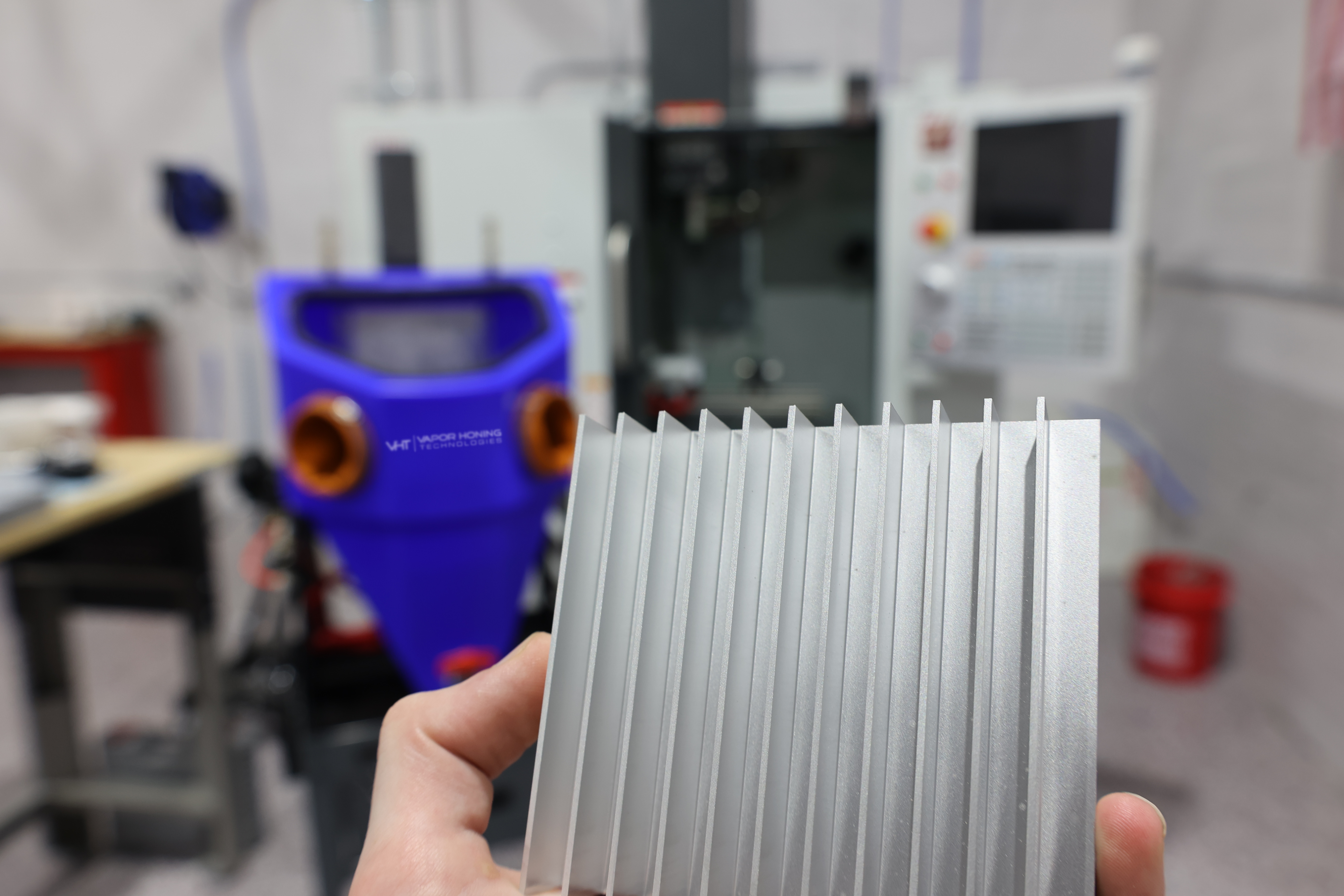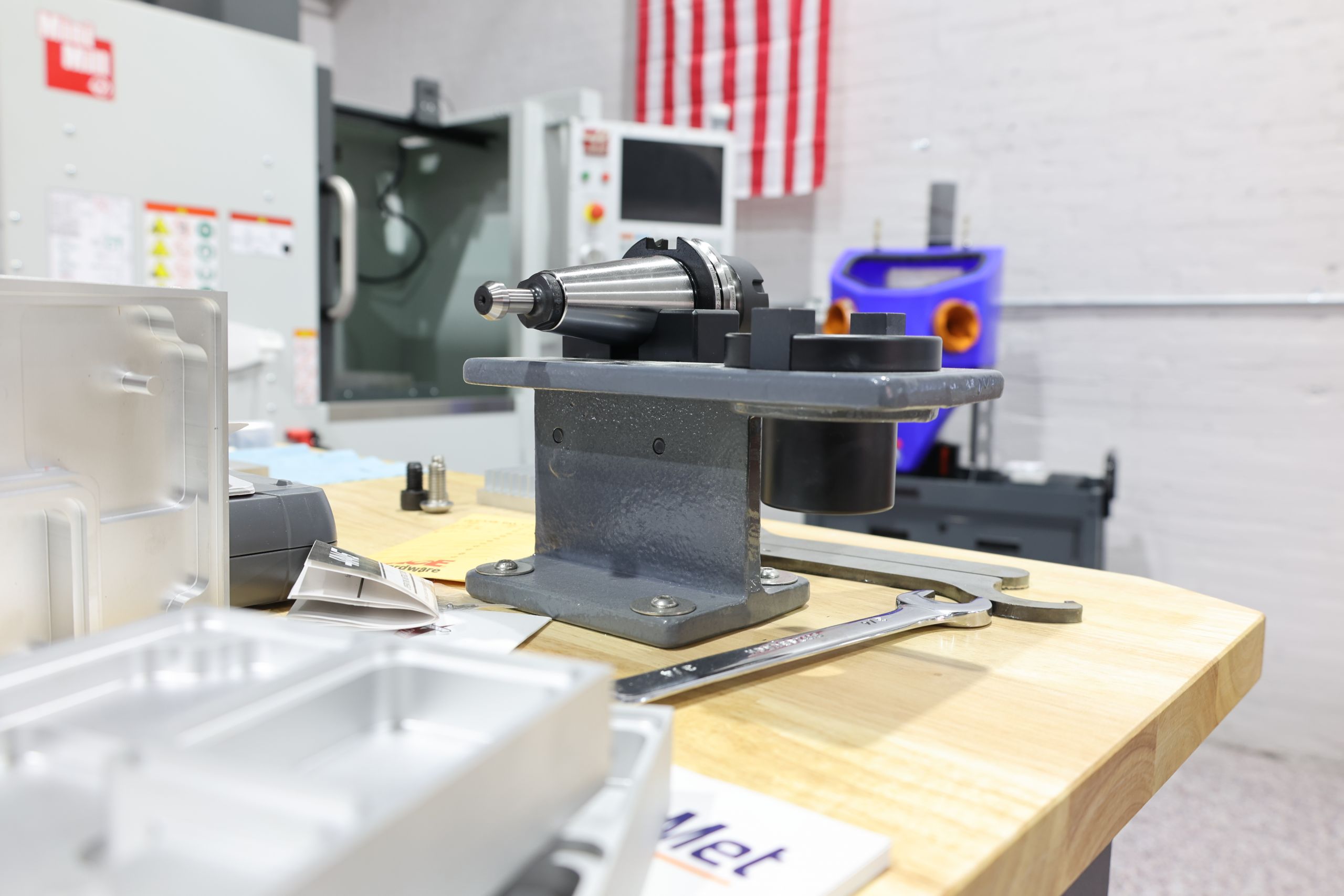Let’s Look at a Brief Explanation of Both Processes
Vapor honing, also known as wet blasting, is a surface finishing process that involves the use of a mixture of water, abrasive media, and compressed air to clean and refine the surface of metal parts. The abrasive media is propelled at high velocity onto the part’s surface, effectively removing imperfections such as burrs, machining lines, and contaminants. This process results in a smooth, uniform finish while also preparing the surface for subsequent treatments such as coating or painting. Vapor honing is valued for its ability to achieve precise finishes with minimal material removal.
CNC (Computer Numerical Control) parts are precision components manufactured using automated machining processes guided by computer programming. These parts are crafted from various materials such as metals, plastics, and composites to exact specifications dictated by digital designs. CNC machining involves cutting away material from a workpiece to achieve the desired shape, size, and surface finish. The CNC process ensures high accuracy, repeatability, and efficiency, making it indispensable in industries ranging from aerospace and automotive to electronics and medical devices. CNC parts find applications in a wide array of products, from intricate mechanical assemblies to intricate electronic housings, contributing to modern manufacturing’s ability to produce complex, customized, and high-quality components at scale.

Vapor Honing is a Useful Tool in The CNC Industry!
Vapor honing, a technique often integrated with CNC machining, offers a host of advantages in finishing metal parts. Primarily, it ensures a superior surface finish by effectively addressing imperfections like burrs and machining lines. This process, employing a combination of water, abrasive media, and compressed air, results in parts with a uniform appearance and enhanced aesthetics.
One of its key functions lies in deburring. CNC machining frequently leaves behind burrs and sharp edges, posing safety hazards and detracting from functionality. Vapor honing efficiently eliminates these imperfections, ensuring parts are smooth and safe for handling. The abrasive media used in this stage varies based on the material and the desired finish. The more aggressive an abrasive is the easier a time it is to deburr and surface prep. While Spherical Abrasives work base for smoothing, shining, and cleaning. Many people will run a mixture of both when Vapor Honing CNC Parts. NOTE: (We recommend a mix of 4:1 Glass Bead to Aluminum Oxide)
Moreover, vapor honing serves as an effective cleaning method, removing oils, greases, and machining residues from the part’s surface. This not only enhances cleanliness but also prepares the surface for subsequent treatments like coating or anodizing. The clean, uniform surface achieved through vapor honing facilitates optimal adhesion and performance of these treatments, ensuring durable and high-quality finishes.
Consistency is another notable benefit, as vapor honing delivers uniform results across batches of CNC-created parts. This reliability maintains quality standards and ensures all components meet specifications consistently. Additionally, its versatility allows for application across various materials, including aluminum, steel, titanium, and alloys, making it suitable for a wide range of CNC-produced parts.
Furthermore, vapor honing is environmentally friendly compared to alternative finishing methods. By utilizing water and abrasive media, it minimizes the generation of hazardous waste, contributing to sustainability initiatives. While there may be initial setup costs, the long-term cost-effectiveness of vapor honing becomes evident through improved quality, reduced rework, and enhanced part longevity.






